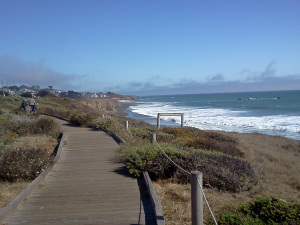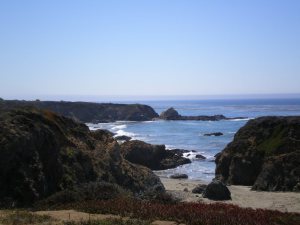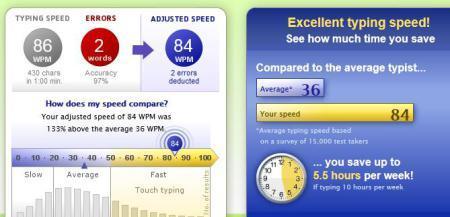Jae's Blog, page 47
August 31, 2012
Writing hours in August
Wow. August went by quickly.
I worked on my latest novel, Something in the Wine, with the copy editor this month, so now we’re one step closer to publication. The cover will be created next. In fact, we’re already working on that.
I’ve been beta reading a lot this month and my day job was pretty stressful too this month, so I didn’t have much time for writing. I’m hoping that will change in September.
So here are some numbers:
Writing
Beta reading
January
47 hours
5 hours
February
31 hours
2 hours
March
36 hours
3 hours
April
12 hours
31 hours
May
51 hours
15 hours
June
36 hours
4 hours
July
51 hours
2 hours
August
5 hours
13 hours
TOTAL
269 hours
75 hours
I’ll post a monthly update of my writing hours each month, so check back at the end of September.
Filed under: Jae's writing process, News, Something in the Wine Tagged: writing hours


August 21, 2012
Perfect settings
When I first started doing research for my newest novel, Something in the Wine, I decided to set it in Paso Robles, California. Once I decided on the location, I looked for a place within driving distance where one of the romantic key scenes could take place.
When I stumbled across a website of Moonstone Beach, I knew I had found the perfect location. Two of my beta readers have visited Moonstone Beach and sent me photos (Thank you to RJ and Erin for letting me use a few of the photos for this blog post).
Here’s a description of Moonstone Beach that is taken from Something in the Wine:
Side by side, they strolled along the wooden boardwalk that ran the length of the cliff above the beach. An elderly couple sat on one of the benches, and a woman had taken an easel down to the beach, but otherwise, they were alone. Seabirds flew daring maneuvers around them.
Drew watched Annie take it all in. A sense of awe made Annie’s usually controlled face glow. Drew smiled, glad she hadn’t just taken her to a restaurant. Moonstone Beach was one of her favorite places, and she was happy she could share it with Annie. “Come on.” She stood and led the way to the stairs. The wind picked up as they descended to the ocean.
Instead of sand, tiny, colorful pebbles covered the beach. They strolled along the shore, stepping over driftwood or stopping to pick up shells every once in a while. Waves crashed against rocks jutting into the ocean, and in the distance, seals soaked up the last rays of sunshine.
God, this is ridiculously romantic. A few times, Drew barely resisted the urge to take Annie’s hand. Maybe bringing her here wasn’t such a good idea after all.
One glance at Annie made her change her mind. With her golden hair blowing in the wind and her cheeks reddened by the breeze, Annie looked more carefree than she ever had. She walked with her head held high, not slouching as she often did.
Moonstone Beach is named for the stones that can be found there.
There are actually two types of moonstones.
There’s a gem-quality stone that is a type of feldspar. These are white, bluish, or peach-colored stones that seem to be emanating light like an opal (an effect known as adularescence).
The moonstones found on Moonstone Beach are chalcedony, a microcrystalline quartz.
Here’s a picture of the moonstone my best friend gave me as a gift.
In many cultures, moonstones were regarded as magical stones. The Romans thought they were created by frozen moonbeams. The Greeks wore them as talismans and believed that moonstones could help you find your true love. Moonstone is the stone of love and new beginnings—and that’s what fit my novel so perfectly.
One of my main characters, Annie Prideaux, has decided that love is not for her. Instead, she focuses on books, her cat, and her work as an accountant. When she meets Drew Corbin, she not only falls in love but starts to change her whole outlook on life.
Have you ever stumbled across a setting that just seemed perfect for one of the scenes in a novel?
Filed under: News, Something in the Wine Tagged: Moonstone Beach, moonstones, settings, writing


July 31, 2012
Writing hours in July
July is over already, so I took a look at the total number of writing hours.
I’m planning on sending the last draft of my work-in-progress, Something in the Wine, to the editor this week, so I spent a lot of time rewriting, revising, editing, and proofreading. I also worked on translating one of my short stories (I’ll blog about that experience in the future. Needless to say it’s much harder than it looks).
Writing
Beta reading
January
47 hours
5 hours
February
31 hours
2 hours
March
36 hours
3 hours
April
12 hours
31 hours
May
51 hours
15 hours
June
36 hours
4 hours
July
51 hours
2 hours
TOTAL
264 hours
62 hours
I’ll post a monthly update of my writing hours each month, so check back at the end of August.
Filed under: News


July 20, 2012
15 ways to find a beta reader or critique partner
In one of my last posts, I talked about how important beta readers are. Most writers I know agree with me on that. Unfortunately, finding a (good) beta reader is easier said than done. After all, we need to find a person who is not only willing to help us with our novel but who is also qualified.
At least once a week, a desperate writer sends me an e-mail, asking me to beta read for her or to tell her where to find a beta reader.
Here are a few suggestions that can help you find a beta reader:
For most writers, the first beta reader they ever have is a friend or relative. When I first started writing at the age of eleven, my poor twin sister had to read all my stories. Most people will tell you that it’s not a good idea to have a friend or family member beta read for you. They will either spare your feelings and give only positive feedback, or if they’re brutally honest, it might hurt your relationship with them. It’s amazing how much it can hurt when someone close to you criticizes “your baby.” And let’s face it, most of our friends and family members are probably not writers (or even avid readers), so most of the feedback you get from them might be, “I liked it.” I’m not saying having a friend or family member beta read for you can’t work, though. My best friend is one of my beta readers, and she does an excellent job. Try it; just don’t solely rely on them.
Search websites that provide directories of beta readers. Usually, these websites list e-mail addresses and specify the skills and preferences, e.g., preferred genres or story length, of each beta reader. For lesbian fiction, The Athenaeum and Passion & Perfection have the largest directories of beta readers.
Join a local writers’ group. If there is no writers’ group in your area, you could start your own. There are even books that describe how to start and run a critique group, for example The Writing and Critique Group Survival Guide or How to Start and Run a Writers’ Critique Group .
Join a writer’s organization or online writing group. Many organizations for writers have online critique groups or forums or discussion boards where you can search for beta readers. Some examples for writers’ groups:
Romance Writers of America (RWA) is one of the largest writers’ associations in the world with over 10,000 members. Despite the name, membership is not just for writers in America. RWA has several local and online chapters. One of the special-interest chapters is the Rainbow Romance Writers for professional authors of gay, lesbian, bisexual, and transgender romances.
Absolute Write is one of the biggest and most active forums for writers with almost 43,000 members. Absolute Write’s Water Cooler has a “Beta Readers, Mentors, and Writing Buddies” forum, which is designed to help writers find suitable beta readers and critique partners.
myWritersCircle is another large forum with over 39,000 members. They also have a workshop where you can ask for feedback or search for beta readers.
Writer’s Digest has forums in which you can get and give critiques.
Golden Crown Literary Society is an “organization for the enjoyment, discussion, and enhancement of lesbian literature.” The GCLS has a Yahoo! discussion group (mailing list). As a member of the GCLS, you can access a (short) list of beta readers under the group links or you can post a request for beta readers.
The Lesbian Fiction Forum has a “Private Workshop” that critiques lesbian fiction.
C-Spot , a forum for readers and writers of lesbian fiction, has a subforum that matches writers of lesbian fiction and beta readers.
Querytracker , a website that helps you track your query letters, has a forum for finding critique partners or groups.
Forward Motion , founded by Holly Lisle, has a “critique connection” for members.
Critique Circle is a workshop in which members can receive and give feedback. You earn credits by critiquing other writers’ stories and pay with credits for getting feedback on your own story.
Critters is a large workshop that critiques mostly science fiction, fantasy, and horror. You will receive in-depth critiques as long as you write one critique a week.
Participate in mailing lists for writers or mailing lists where writers and readers meet. You’ll always find readers willing to beta or test read for you. Two of the biggest Yahoo! groups for lesbian fiction are Lesfic_unbound (678 members) and the Virtual Living Room (509 members). Lesfic_unbound has a list of beta readers and experts in the group’s “database” section. Or you can just post a request for beta readers.
There are even critique partner matching sites. On Ladies Who Critique you can search for a crit partner based on genre, experience, interests, and more.
Put a notice on Twitter or Facebook . Give some information about your novel and what you’re looking for in a beta reader.
Goodreads , a social-networking site for readers about which I blogged before, has several book clubs, discussion groups, and even a beta reader group, where you could search for a beta reader.
Save your feedback e-mails. When readers e-mail me to give feedback for one of my published books or short stories and they go into more detail than just saying “I loved your book,” I write down their e-mail address—especially of readers who point out mistakes or weaknesses in my books. I’m looking for people who can help me improve my work, not a fan club.
Writers’ conferences are excellent places to establish networks and get to know other writers and readers. Here’s a great site to search for writers’ conferences worldwide.
If you participate in online writing classes or workshops, you can meet other writers aiming to improve their writing skills. Here’s a list of writing classes and workshops.
I’ve even seen some writers search for beta readers on the Amazon Discussion Boards .
Post a request for beta readers, test readers or critique partners on your blog or website and explain what you’re looking for. When I posted a request for test readers for Hidden Truths on my blog, I had over sixty volunteers. Or you could ask the people who left comments on your blog if they would be interested in beta reading.
Connect with other writers on their blogs, leave comments, and build networks. If you follow other writers’ blogs, you’ll learn a lot about what kind of writers they are and whether they might be good critique partners for you.
Just send out e-mails to fellow writers, maybe people who write in the same genre, and ask if they would be interested in a critique partnership. It never hurts to ask. The worst thing that could happen is that they say no.
So, to sum it up, the best way to find beta readers is to search for a critique partner instead. If you have trouble finding a beta reader, then other writers are in the same situation and you can help each other out by trading beta reading services.
Also, try to be more active in writing communities in which you can establish networks and connections with other writers and readers. The more well-known you are by participating in discussions or helping out other writers, the easier it becomes to find beta readers.
So, how and where did you find your beta readers or critique partners?
Filed under: writing tips Tagged: beta reader, critique group, critique partner


July 13, 2012
FemSlash Con 2012
Tomorrow, the online community will celebrate the 5th International Day of Femslash.
For those of you who have never heard of it: Femslash is fanfiction featuring relationships between two women (who, most often, are straight in the canon universe of the tv show/movie).
They alway hold an online FemSlash con on the nearest weekend. That convention is taking place this weekend, and I’ve been asked to be a panellist on the original fiction panel. The other panellists will be Kim Pritekel, dabkey (a.k.a. K.E. Lane), Erin O’Reilly, Del Robertson, Jazwriter, Gin, and ralst.
Here’s a synopsis of the panel:
Writing fanfiction has its own problems and difficulties, but once we make the leap to original fiction, the world created becomes entirely our own. No longer will we have set universes with fleshed out characters to work with. Original fiction means starting from scratch and relying entirely on your own imagination. How difficult or easy is that to do? What makes original fiction work? Let’s talk about what it takes to make it as a writer of original fiction.
The original fiction panel starts on Saturday, July 14, 6 p.m. EST.
Take a look and come join us.
Filed under: News Tagged: femslash, original fiction








July 12, 2012
Caring for Kara
Many of you have probably already seen the posts about Kara Leonardo.
Kara Leonardo is a long-time reader and supporter of lesbian fiction. In February, she was seriously injured in a car accident that killed her partner.
Roselle Graskey, Sharon Baughman, and some others have put together an auction to help Kara. They have an amazing list of autographed books and other items that authors donated, including a paperback copy of Next of Kin and the e-book and audio book of Backwards to Oregon. It really makes me proud to see the lesfic community stand together and help one of its members in need.
The auction will run until August 5.
Check out the list of offerings and contribute to Caring for Kara
Filed under: News








July 7, 2012
Touch-typing
As writers, we spend a lot of time hacking away on our keyboard. Every writer has her or his own way of doing that.
Some touch-type without looking down to find the correct keys. You place eight fingers on the “home row” (asdf jkl; on an English QWERTY keyboard) and reach for the other keys from that position. Over time, the correct movements become part of muscle memory.
Touch-typing allows you to type without conscious attention and frees you to focus on writing (the ideas) instead of typing (the physical process of moving your fingers).
Most people I know—even people who spend a lot of time writing on the computer—no longer learned how to touch-type. Instead, many writers develop their own hunt-and-peck method. Some type just with two fingers and search every key by sight; others type blindly using two to six fingers but don’t place their fingers on the home keys.
The home-key method is the fastest and most efficient, though. People who use touch-typing are on average two times faster than people who use other methods. According to Wikipedia, average professional typists type 50-80 words per minute (wpm), while super-fast typists achieve 100 or more. In comparison, hunt-and-peck typists normally type 20-50 words per minute.
Touch-typing is also more accurate and produces fewer mistakes.
Personally, I use the touch-typing method. I can’t imagine writing any other way. When I was in school, I took a typing class, then promptly forgot everything I learned because I never used those skills again. But once I started writing on a computer, I rediscovered touch-typing. It’s the only way to keep up with the speed of my thoughts and let the words “flow” directly onto the page.
There are several websites that let you test your typing speed, for example TypingTest.com. Take a minute and try it. It’s fun. Let us know your test results and your typing method in the comments.
Filed under: Jae's writing process Tagged: hunt-and-peck method, touch-typing








June 30, 2012
Writing time
At the beginning of this year, I thought it would be interesting to see how much time I spend writing and beta reading, so I started to keep track of my writing / beta reading time.
Now that the first half of the year is over, I took a look at the numbers.
Writing
Beta reading
January
47 hours
5 hours
February
31 hours
2 hours
March
36 hours
3 hours
April
12 hours
31 hours
May
51 hours
15 hours
June
36 hours
4 hours
TOTAL
213 hours
60 hours
I was amazed to see how big the differences between some of the months are. On average, I spent 35.5 hours each month writing and 10 hours beta reading. Is that a lot? Very little? I have no idea, since I don’t have any other numbers to compare it to. But I think for someone who has a full-time job in addition to being a writer, I’m doing okay.
Obviously, the time spent beta reading takes away from my writing time, but I still don’t regret the time spent helping other writers with their manuscripts.
2/3 of my writing time is spent on the train. If it weren’t for the Deutsche Bahn (the German national railway company), it would probably take me two years to complete a novel. 
So is anyone else here a statistics freak and keeping track of the time spent writing?
Filed under: Jae's writing process, Uncategorized Tagged: writing time








June 19, 2012
Goldie Awards 2012
 Last Saturday, the “Goldies” (Golden Crown Literary Society Awards) were awarded at the GCLS conference.
Last Saturday, the “Goldies” (Golden Crown Literary Society Awards) were awarded at the GCLS conference.
I’m proud to say that Hidden Truths won in the category historical romance.
Here’s a list of winners:
Debut Author:
After the Fall by Robin Summers (Bold Strokes Books)
Open Water by Pol Robinson (Bella Books)
Waiting in the Wings by Melissa Brayden (Bold Strokes Books)
Dramatic/General Fiction Award
Marching to a Different Accordion by Saxon Bennett (Bella Books)
Maye’s Request by Clifford Henderson (Bold Strokes Books)
Shaken and Stirred by Joan Opyr (Bywater Books)
Historical Romance Award
Hidden Truths by Jae (L-Book ePublisher)
Lesbian Erotica Award
A Ride to Remember and Other Erotic Tales by Sacchi Green (Lethe Press)
The Collectors by Lesley Gowan (Bold Strokes Books)
Mystery/Thriller Award
Beyond Instinct by Lynn Ames (Phoenix Rising Press)
Buyer’s Remorse: Book 1 in the Public Eye Series by Lori Lake (Quest/Regal Crest Enterprises)
Hell’s Highway by Gerri Hill (Bella Books)
Paranormal Romance Award
Before the Dawn by Kate Sweeney (Intaglio Publications)
Blood Hunt by L. L. Raand (Bold Strokes Books)
Poetry Award
Head Off and Split by Nikki Finney (Northwestern University Press)
Things I Say To Pirates On Nights When I Miss You by Keely Hyslop (Fourteen Hills Press)
Romantic Suspense/Intrigue/Adventure Award
Dying To Live by Kim Baldwin & Xenia Alexiou (Bold Strokes Books)
Nothing But The Truth by Carsen Taite (Bold Strokes Books)
Tats by Layce Gardner (Bella Books)
Short Stories/Essays/Collections (Non-Erotica) Award
When We Were Outlaws by Jeanne Cordova (Spinster’s Ink)
Speculative Fiction Award
After The Fall by Robin Summers (Bold Strokes Books)
The Dark Wife by Sarah Diemer (Sarah Diemer)
When An Echo Returns by Linda Kay Silva (Bella Books)
Traditional Contemporary Romance Award
96 Hours by Georgia Beers (Bywater Books)
Camptown Ladies by Mari San Giovanni (Bywater Books)
Waiting in the Wings by Melissa Brayden (Bold Strokes Books)
Ann Bannon Award (voted on by members of the GCLS)
Bingo Barge Murder by Jessie Chandler (Midnight Ink)
Director’s Award (given to a GCLS member for contributions made to the GCLS):
Lori Lake
The Lee Lynch Classics Award (honoring books that were published before the GCLS was founded):
The Swashbuckler by Lee Lynch
The Trailblazer Award (an award for lifetime achievement, given to a writer whose works had a positive impact on the growth and visibility of lesbian fiction):
Marianne K. Martin
Congratulations to all winners!
Filed under: lesbian fiction, News, Uncategorized Tagged: awards, GCLS, Goldies








June 12, 2012
Why do you need a beta reader or critique partner?
In the last post, I talked about the difference between beta readers and critique partners. So why are beta readers or critique partners so important?
A beta reader or critique partner provides a fresh pair of eyes. After spending so much time working on your novel, we authors tend to become blind to the shortcomings of our own work. Beta readers and critique partners help us find plot holes, inconsistencies, typos, and many other mistakes.
Two heads think better than one. If you are stuck, you can brainstorm together. Critique partners and beta readers provide you with a second opinion when you are not sure whether something works.
Critique partners and beta readers make the process of writing less lonely. Writing is a solitary activity, but revising doesn’t need to be. Beta readers and critique partners can be cheerleaders and supporters too. If it hadn’t been for the encouragement of my long-time beta reader, I doubt I would have taken the step toward publication.
A good beta reader or critique partner does wonders for your motivation. They don’t just point out the mistakes but also compliment your progress and the things you did right. You’ll also sit down more often to write if you know the beta or critique partner is waiting for the next part.
Most importantly, beta readers and critique partners will help you improve your novel and your writing skills. They don’t just point out mistakes, they will also show you how to further improve your manuscript—how to deepen the characterizations, how to make the dialogue even snappier, how to increase suspense, etc. This will not only increase your chances for publication, but also help you build a good reputation with readers, especially if you self-publish. I’d rather a beta reader or critique partner catch a mistake than a reader who paid for my book.
As an added bonus, long-term beta readers and critique partners can become friends. I didn’t start out looking to establish close friendships with my beta readers, but with two or three of them, that’s exactly what happened.
So as a friend once told me: a good beta reader is worth her or his weight in chocolate. 
How about you? Why do you value beta readers and critique partners?
Filed under: writing tips Tagged: beta reader, critique partner


















